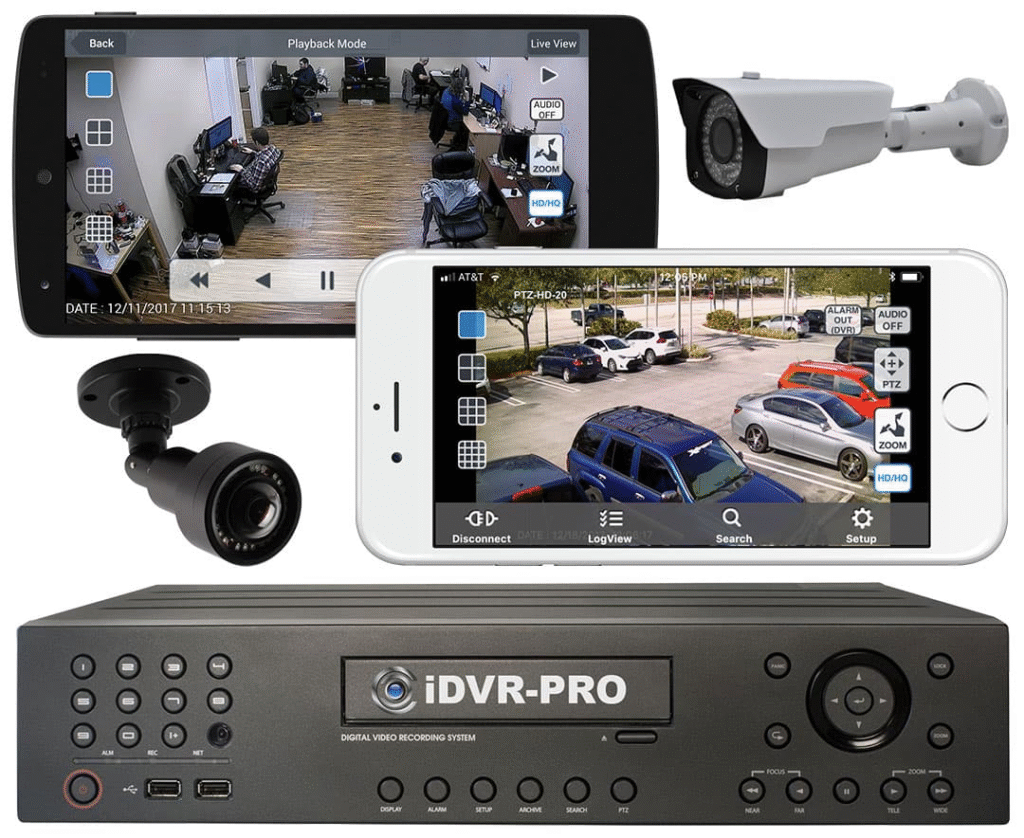Home » Dahua Accessories » How to Access Your CCTV Feed from Your Smartphone
How to Access Your CCTV Feed from Your Smartphone
- Jul, 25, 2025
- M G
- Dahua Accessories, General
Accessing your CCTV feed remotely via smartphone has become one of the most demanded services in security today. Whether for homes or businesses, modern CCTV installation businesses offer seamless mobile viewing that delivers real‑time monitoring, motion alerts, and playback access from anywhere. This article guides you step‑by‑step on how to set up CCTV remote viewing on your phone using the most reliable methods installed by professionals.
Why Remote Viewing is Essential
Remote smartphone access to CCTV enables real‑time monitoring while you’re away, instant notifications when motion is detected, and the ability to review footage without needing to physically visit your property. It adds convenience, security, and peace of mind for property owners, making it a top‑requested feature.
Step 1: Choose a CCTV System with Mobile Support
Ensure the CCTV system you install supports remote access. Most in‑demand systems today include:
- IP cameras (Wi‑Fi or Ethernet)
- DVR or NVR systems from leading brands
- Cloud‑enabled models with UID or device ID linking
Look for keywords like smartphone compatible, P2P technology, cloud access, or mobile app support when selecting the right system.

Step 2: Connect the System to the Internet
- Wi‑Fi Cameras: Use the manufacturer’s app to pair the camera with the local Wi‑Fi network.
- Wired DVR/NVR systems: Connect via Ethernet to the router. Make sure the internet connection is stable and offers sufficient upload bandwidth.
Professional installers typically configure networking parameters, set static IPs if needed, and recommend a minimum upload speed for smooth live streaming.
Step 3: Install the Mobile App
Download the official mobile app specific to your CCTV brand on Android or iOS. Popular apps include:
- Hik‑Connect, iVMS‑4500
- Dahua DMSS or gDMSS
- Brand‑specific apps like V380, Reolink, or CP Plus
Create an app account using email or phone—some apps require login credentials to enable remote viewing.
Step 4: Add the Device to the App
Most installers guide you through linking your CCTV device:
- Scan the QR code on your camera or recorder
- Enter the device UID or device ID manually
- Input IP address and port (for advanced setups)
Once added successfully, you can customize video resolution, motion detection zones, and notification preferences.
Step 5: Enable Remote Access (P2P or Port Forwarding)
P2P / Cloud-Based Access (Recommended)
With modern cloud or peer‑to‑peer (P2P) systems, remote access is simple. Scan the device QR code or enter its UID into the app—no router configuration needed. This method is favored for ease and reliability.
Port Forwarding (Advanced Option)
For non‑P2P systems or advanced setups, port forwarding is configured:
- Assign a static IP to the DVR/NVR
- Open required ports (HTTP, server port—e.g. 80, 8000, RTSP port 554) on the router
- Forward these ports to the device IP
- Use your public IP or dynamic DNS hostname plus port in the app or browser to connect
This method offers greater control but requires advanced network knowledge and must be secured properly.
Step 6: Use the App to View Live Feed and Playback
Once setup is complete:
- Open the mobile app
- Log in with your account
- Select your added device
- View live streaming, playback recorded footage, configure alerts, and manage settings
Many professional installations allow multiple authorized users to view simultaneously on different devices.
Step 7: Secure Your Remote Access
Security best practices are essential:
- Change default passwords immediately
- Disable UPnP or plug‑and‑play forwarding on your router
- Use VPN access (WireGuard, OpenVPN, or Tailscale) for secure remote entry
- Create separate VLANs and limit device access to isolate CCTV from other network devices
These measures help prevent unauthorized access and protect your surveillance system.
Troubleshooting Common Issues
- If live feed fails, check the camera’s internet connection and signal strength
- Ensure apps and firmware are updated
- Restart your router, DVR/NVR, or cameras if the feed drops
- Verify ports are opened correctly and firewalls aren’t blocking access
- Test access both inside and outside your home/business network
Clean installations and regular maintenance by professionals reduce the odds of technical faults.
Best Method Comparison
| Method | Benefits | Drawbacks |
|---|---|---|
| P2P / Cloud Access | Easy setup, no router changes | Relies on manufacturer servers |
| Port Forwarding | Full control, local access options | Higher technical complexity |
| VPN Access | Strongest security, private usage | Requires advanced setup |
Professional installers help you choose the right option based on security preference and technical capability.
Summary
Connecting CCTV to your smartphone delivers unmatched convenience and safety. The most customer‑preferred solutions today are modern IP camera systems with mobile apps and cloud or P2P access. Working with professional installers ensures setup is smooth, secure, and optimized for remote access. With proper configuration, you can monitor your home or business live, receive instant alerts, review recordings, and manage settings—all from your mobile device.
#CCTVRemoteAccess #CCTVMobileMonitoring #SmartphoneCCTV #RemoteSecurityCamera #LiveCCTVFeed #IPCameraAccess #RemoteMonitoringApp #SecurityCameraSetup

Comments are closed.